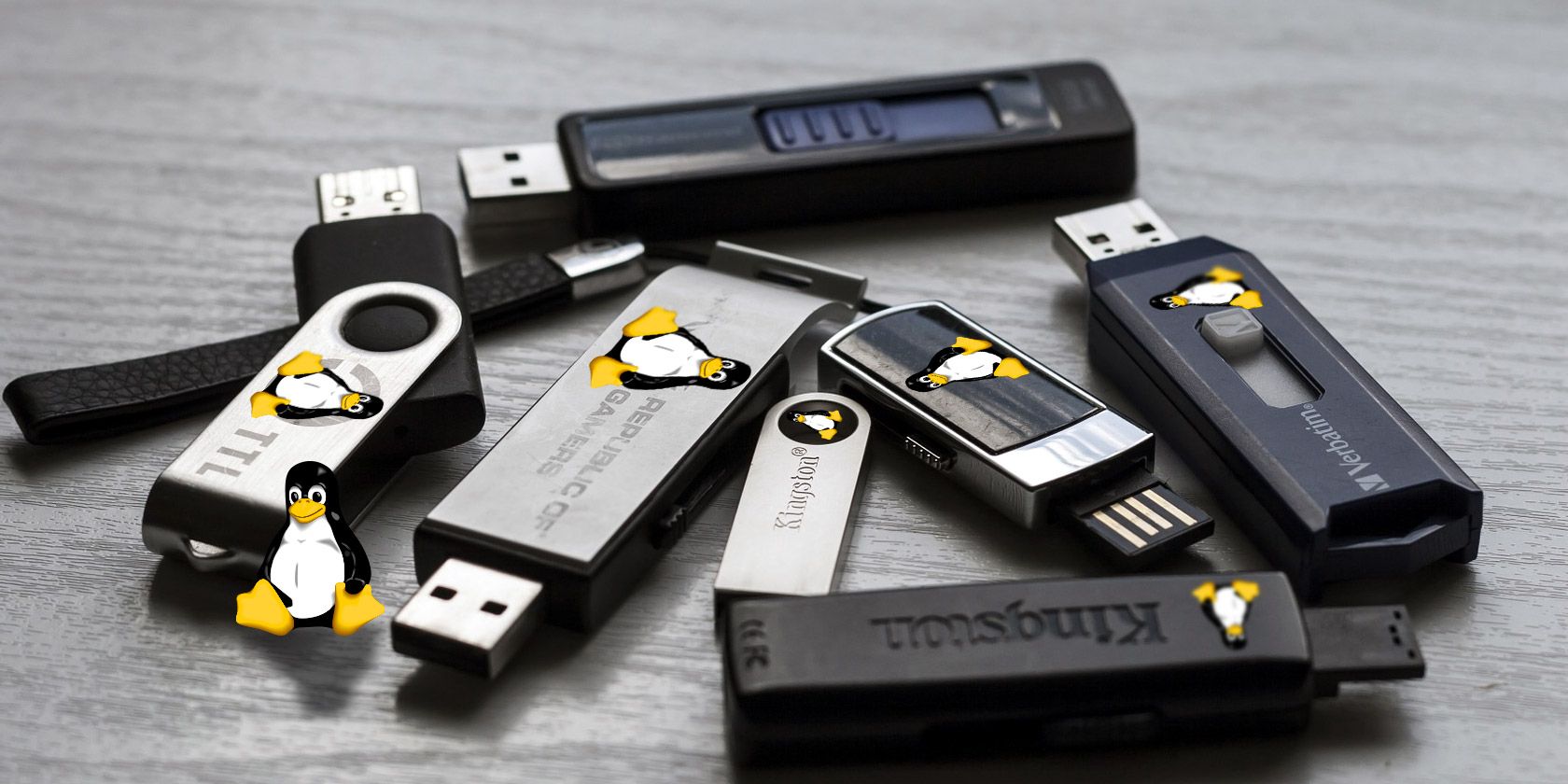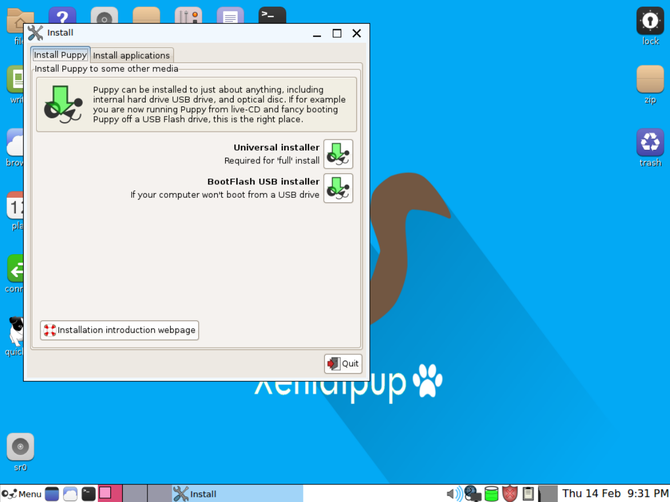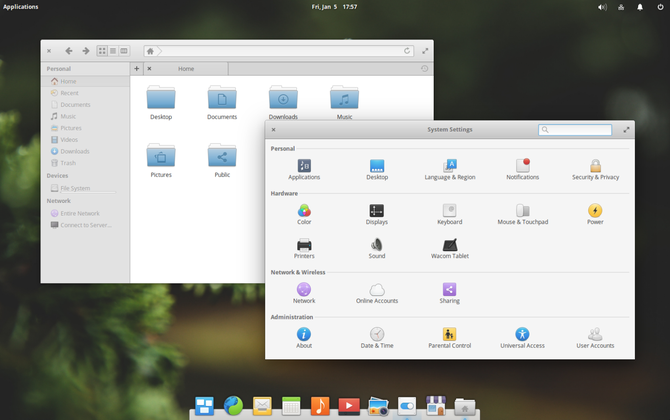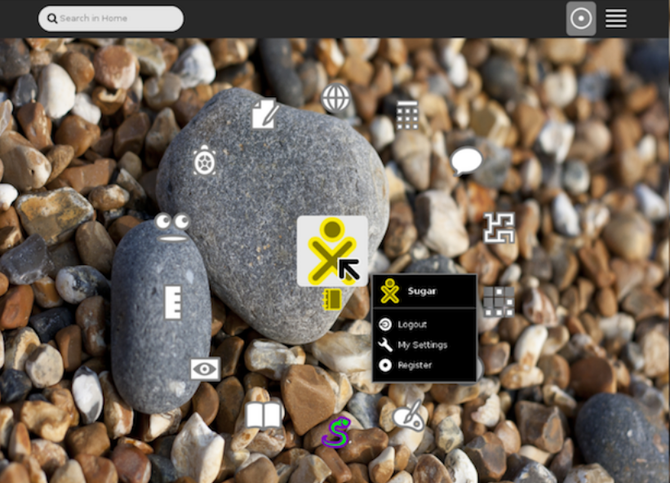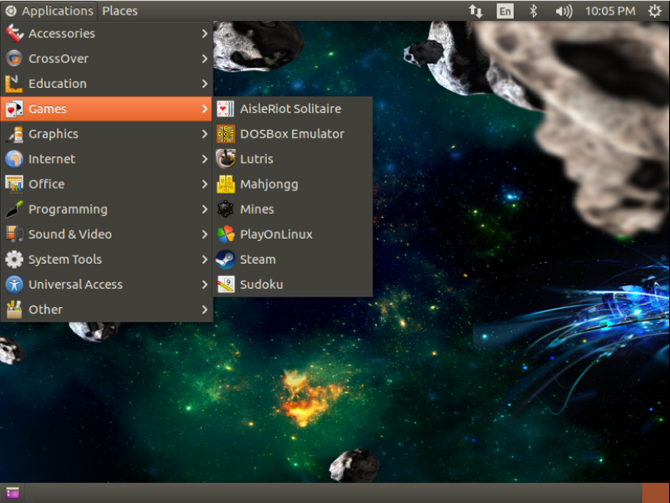Sometimes you can't avoid using someone else's computer. Some airlines limit how much baggage you can bring. Occasionally you have to leave your machine at home. If your computer breaks, you might have to use someone else's while you wait for a replacement. Except before that happens, you need a way to save your data.
What can you do in this situation? Shove a version of desktop Linux onto a USB stick and boot into it as required. But what's the best live USB Linux desktop you can install?
1. Linux USB Desktop for Any PC: Puppy Linux
For some time, Puppy Linux has been seen as little more than a curiosity. Designed to be used on the most austere hardware, it could comfortably chug away on early Pentium machines without breaking a sweat. But it wasn't that practical. Many installed Puppy Linux on their antique hardware to just to see if they could.
But Puppy Linux never went away. Updates and new versions are still regularly released. Sure, it's still stripped down and meant for low-end or underpowered hardware. But you can now install Puppy Linux on a USB stick and get stuff done.
Puppy Linux isn't a single Linux distribution. It consists of multiple versions based on different code but using the same tool and philosophy. One version is based on SlackWare, which is one of the most well-established Linux distributions.
People continue to use it as their day-to-day operating system. People understand it. Then there are multiple options based on Ubuntu, the most popular version of desktop Linux.
2. A More Modern Desktop Experience: elementary OS
Are you a newcomer to Linux who just wants something simple and attractive to keep in your pocket? Check out elementary OS.
elementary OS offers a cross between the popular GNOME desktop environment and what you get on a Mac. The resulting experience is so intuitive, you can pick it up on your own with a few clicks.
AppCenter provides apps built only for elementary OS along with other essentials, like the LibreOffice suite, the GIMP image editor, and the Audacity sound editor. This way you can hit the ground running even if you have no idea what software is available for Linux.
Since elementary OS shares a lot in common with Ubuntu, you can be confident you won't have to deal with any hardware compatibility gremlins. Plus, it proves to be buttery-smooth, even on low-end hardware, like laptops and cheap Atom and Celeron-powered machines.
This is important when you're also dealing with the inherent performance bottleneck that comes with booting your desktop from a live Linux USB drive.
3. Tool for Managing Your Hard Disk: GParted Live
Hard drives consist of chunks called partitions. Your computer's hard drive might have just one partition for all your files and folders. Or it might have one partition for your programs and another for your documents. From time to time, you might need to resize these partitions or wipe them entirely.
GParted is a common Linux tool used to manage these partitions. Many distributions come with this pre-installed. But if your computer doesn't boot, that does you no good. You need a copy you can load from a USB stick.
It's called Gparted Live, a USB Linux distro for your flash drive. Loading up this little program will let you reshape your hard drive as you require. Be careful though, as one mistake could potentially render your hard drive unbootable.
4. Educational Software for Kids: Sugar on a Stick
Sugar is a free software project built with kids in mind. The goal is to provide an experience that fosters collaboration, reflection, and discovery. Sugar began as part of the One Laptop Per Child project, but Sugar Labs has since found a home as a member project of the Software Freedom Conservancy.
Sugar developers design the software for use in areas where ubiquitous broadband can not be taken for granted. Aspects of the interface can function peer-to-peer and do not require an internet connection at all.
While you have the option to install Sugar directly to a hard drive, you can also run a copy as a live Linux USB desktop. The team actively encourages this and has created a version of Sugar with this in mind known as Sugar on a Stick.
With Sugar on a Stick, you can let a kid temporarily use any computer in the house without fully designating a PC for the job. This is also a way to expose them to the values of free and open software early on rather than the consumption-based experiences found on commercial operating systems.
The screenshots don't really convey what using Sugar is like. Fortunately, you can actually demo Sugar inside of your browser!
5. A Portable Gaming Setup: Ubuntu GamePack
Live Linux USB sticks aren't all about getting work done and saving PCs. Sometimes you just want to have fun. With Ubuntu GamePack, your flash drive is like a portable gaming PC. True, you're limited by the specs of the machine you're borrowing, but as long as you stick to titles with modest requirements, you shouldn't have many problems.
Ubuntu GamePack comes with software that makes gaming on Linux easier. This includes Steam, which lets you download your existing library of Linux titles. There's also Lutris, an open source platform that simplifies game installation. Alternatively, you can use PlayOnLinux or Wine to fire up supported Windows titles.
If you're at a friend's house for a LAN party, but you don't have your own PC, Ubuntu GamePack can serve in a pinch. You can also keep copies around on different flash drives as an easy way to ensure everyone is using the same game version with the same configuration.
Are Linux USB Sticks Practical?
How does using Linux on a flash drive work in practice? You might have concerns that running a desktop operating system on a USB stick would be an exercise in frustration. But actually, it isn't too bad.
Modern USB standards mean there's far less lag. Plus prices have crashed, while storage quantities have soared. You can now get a 256GB stick with as much storage as your laptop, and it won't cost you much money.
You aren't limited to having only one Linux desktop on your flash drive. As is the case with your computer, you can dual-boot multiple live Linux desktops from a single USB stick.
If this isn't for you, here are the best Linux distros for laptops.

